
COPD Death Rates in the United States
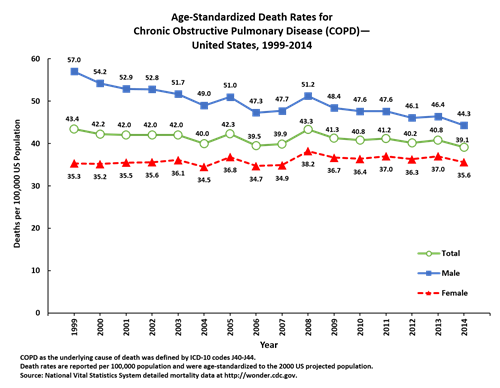
Although age-adjusted death rates for COPD declined among US men from 1999 (57.0 per 100,000) to 2014 (44.3 per 100,000), death rates have not changed significantly among US women (35.3 per 100,000 in 1999 and 35.6 per 100,000 in 2014). Age-adjusted death rates varied between states (see figure below) in 2014 and ranged from 15.3 per 100,000 in Hawaii to 62.8 per 100,000 in Kentucky. States with the highest COPD death rates are clustered along the Ohio and Mississippi Rivers.
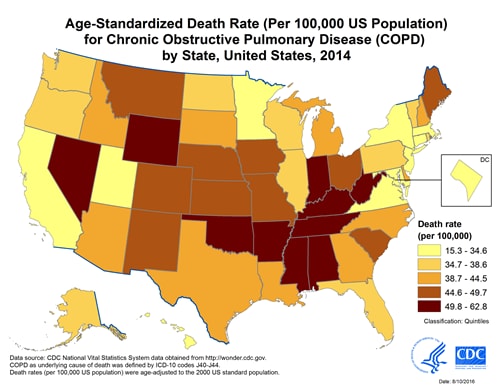
COPD Prevalence in the United States
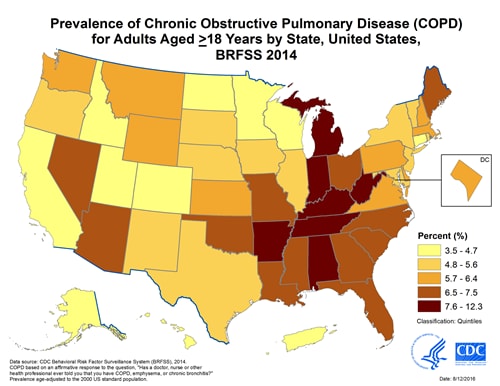
The previous figure shows age-adjusted prevalence of COPD among adults in the United States during 2014. The prevalence of COPD varies considerably by state, from <4% in Hawaii, Colorado, and Utah to >9% in Alabama, Tennessee, Kentucky, and West Virginia. States with the highest COPD prevalence are clustered along the Ohio and lower Mississippi Rivers.
Although the Behavioral Risk Factor Surveillance System (BRFSS) survey provides data critical for monitoring national and state population health, it does not have sufficient samples to produce direct survey estimates for most counties or subcounty areas. Therefore, BRFSS data were used to develop statistical models estimating COPD prevalence at different geographic levels, including counties, congressional districts, and census tracts. These estimates could be used in a variety of contexts and meet the diverse small-area health data needs of local policy makers, program planners, and communities for public health program planning and evaluation.
The maps below present model-based COPD prevalence by county, congressional district, and census tract.1
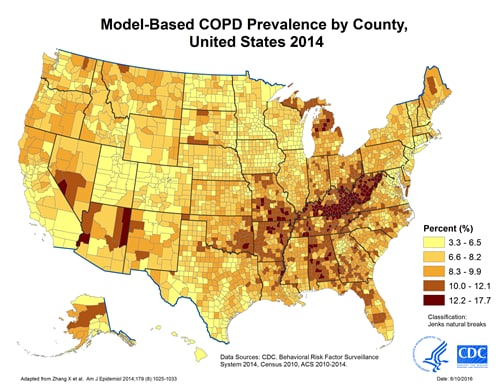
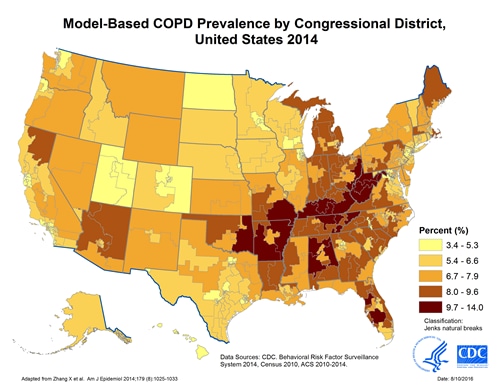
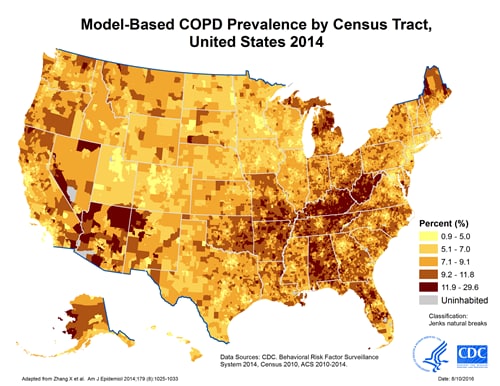
- Zhang X, Holt JB, Lu H, et al. Multilevel regression and poststratification for small area estimation of population health outcomes: a case study of chronic obstructive pulmonary disease prevalence using BRFSS. Am J Epidemiol. 2014;179(8):1025–1033.
Work-Related Lung Disease (eWoRLD) Surveillance System
This CDC national surveillance system is maintained by the National Institute for Occupational Safety and Health (NIOSH). It includes up-to-date summary tables, graphs, and figures of occupation-related respiratory disease surveillance data on pneumoconioses, occupational asthma and other airway diseases, and several other respiratory conditions, including COPD. Learn more about the Work-Related Lung Disease Surveillance System.
































No hay comentarios:
Publicar un comentario